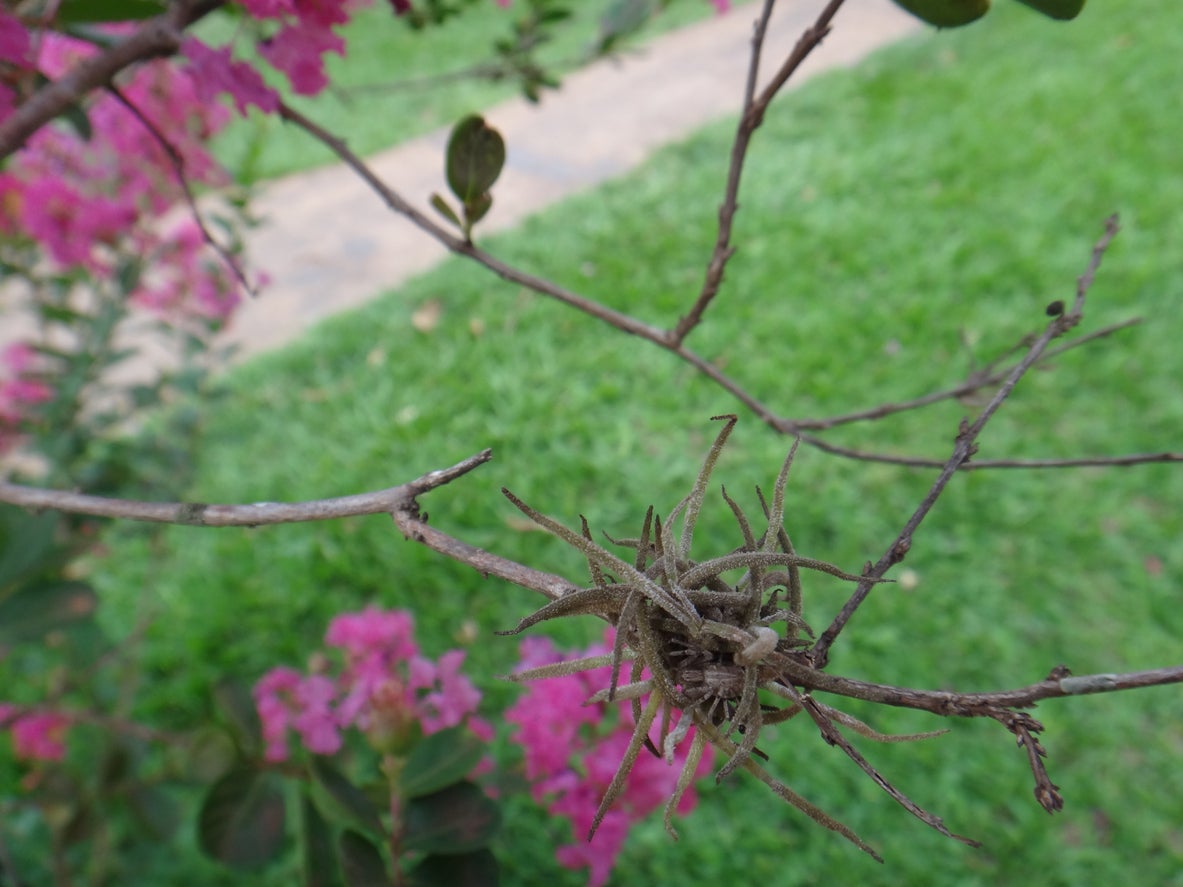What Is Ball Moss: Tips For Getting Rid Of Ball Moss

If you have a tree that is covered in Spanish moss or ball moss, you might be wondering if it can kill your tree. Not a bad question, but to answer it, you first need to know what ball moss is before determining whether ball moss is bad or not.
What is Ball Moss?
Ball moss is gray-green and commonly found on tree branches and telephone wires. It grows in small clumps about 6-10 inches (15-25.5 cm.) across. The tiny seeds are blown on the wind until they land on a tree branch or other suitable area. They stick to the area and develop pseudo-roots that attach to the bark of the tree.
Additional Ball Moss Information
Ball moss is often mistaken for Spanish moss. While it is not Spanish moss, both are epiphytes. Epiphytes are plants that attach themselves to trees, power lines, fences, and other structures with pseudo-roots. Unlike other plants, epiphytes do not absorb water and minerals but rather have the ability to uptake nitrogen in the air and convert it into a form that the plant can use nutritionally.
Epiphytes are true plants that bear flowers and seeds and are members of the Bromeliad family along with not only Spanish moss but pineapple as well.
Is Ball Moss Bad?
Since the moss is not taking anything from the tree, it is not a parasite. Ball moss may, indeed, be found on less than healthy trees more often than not, but that is simply because a sick tree may have less dense foliage, and the less foliage, the more obvious ball moss will become. So really, it is just a matter of convenience that ball moss favors growth on sick trees.
The trees aren’t sick because of the ball moss. In fact, when ball moss dies, it drops to the ground and decomposes, actually providing fertilizer for plants surrounding the tree. While ball moss isn’t bad for the tree, it can look unsightly. Getting rid of ball moss is no walk in the park though. Read on to learn about ball moss control.
Getting Rid of Ball Moss
Since we ascertained that ball moss isn’t a parasite and isn’t causing the tree to be sick in any way, there usually isn’t a reason to get rid of ball moss. That said, if the tree is heavily covered and it’s bothering you, ball moss control may be for you.
Sign up for the Gardening Know How newsletter today and receive a free copy of our e-book "How to Grow Delicious Tomatoes".
Ball moss control can be established using three methods: picking, pruning, or spraying. Sometimes, a combination of these methods is the best way to control ball moss.
- Picking is exactly what it sounds like, physically removing ball moss from the tree. It’s a labor intensive, rather tedious process and it can be dangerous because you may need to get pretty high up to remove the moss.
- Pruning entails cutting and removing dead interior limbs from the tree and/or judiciously thinning the canopy. Usually, most moss is growing on the dead, interior limbs, so removing them removes the majority of the ball moss. Thinning opens the canopy to more light; ball moss prefers low light so it discourages further growth of moss. Ball moss is common on oaks, but when pruning oaks, be sure to paint all pruning cuts to reduce the risk of oak wilt.
- Spraying is a last resort. It involves the application of a foliar chemical spray. Kocide 101 provides sufficient control. Apply at the recommended rate according to the manufacturer’s instructions. Within 5-7 days from application, the ball moss will shrivel up and die. It will remain in the tree, however, until the wind is sufficient enough to knock it out. Because of this, it is recommended to prune the dead wood first and then apply the foliar spray. That way the majority of the ball moss will be removed and you will be maintaining the tree at the same time.
Remember that often it will take a combination of the three methods to remove the ball moss in its entirety.

Amy Grant has been gardening for 30 years and writing for 15. A professional chef and caterer, Amy's area of expertise is culinary gardening.
